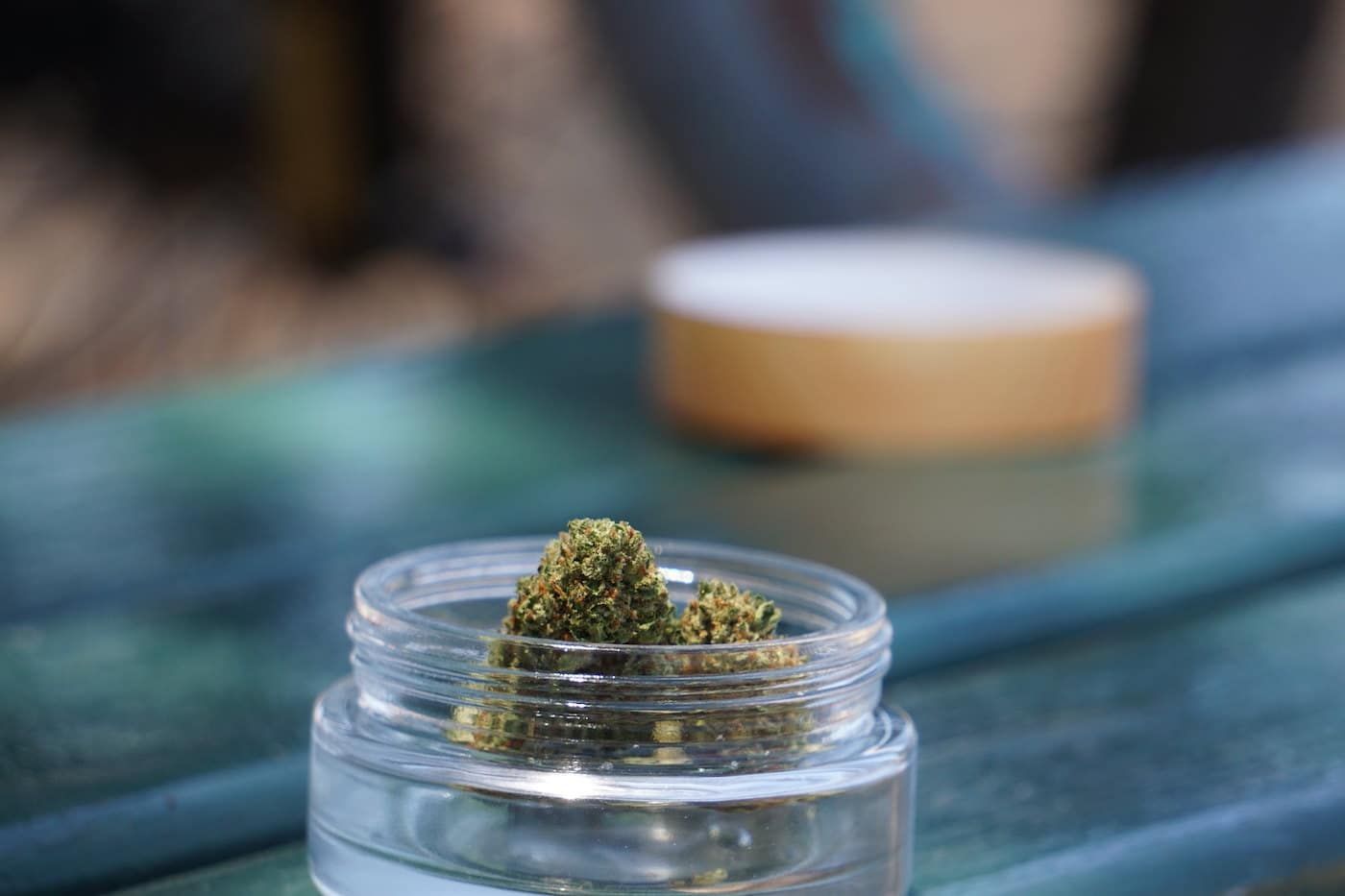No Need to Panic: Parenting With a Harm Reduction Approach
June 16, 2019 | Barry Lessin, M.Ed., CAADC
Fear about a young person's drug use can cause you to make bad decisions that can harm your child and your relationship with them. By tapping into what harm reduction and skilled parenting share, you can begin feel more at ease in dealing with your child's substance use.
Discovering that your child has started experimenting with drugs or alcohol is very troubling. Worry can quickly escalate into fear, especially when attempts to intervene fail. Many parents often feel helpless and out of control.
Confronted with the news that their child is getting high, the first question parents often ask me is, “How can I get her to stop?” The answer is, “That's not the best place to start".
A harm reduction approach allows me to work with families impacted by alcohol and substance use in a way that allows family members to feel more empowered. I offer suggestions below that incorporate the wisdom of skilled parenting (compassion, respect, trust, creating safety, dialogue, encouraging autonomy) combined with the wisdom of harm reduction. This helps me guide my work with parents that can help them regain a sense of control and effectiveness. You don’t need to reinvent yourself as parents in order to become more confident when drugs and alcohol enter the family circle.
Harm reduction actually comes naturally to parents as you're already practicing harm reduction when you tell your kids to wear helmets when riding bikes, sunscreen when out in the sun, and when you wear seatbelts. Harm reduction pioneer Stanton Peele has long said that common-sense, time-tested parenting principles can be used to help parents cope more effectively with the challenge of a child’s risky behaviors. Harm reduction’s premise that everyone engages (to some extent) in risky behavior, fits with psychological theories of normal adolescent development, during which risk-taking and challenging limits and authority help children establish independence and identity.
The pillars of harm reduction complement those of effective parenting. Harm reduction holds four important lessons: 1) People do drugs for reasons; 2) It’s easiest to connect with someone when we start “where they’re at”; 3) Small positive change is still change; and 4) “hitting bottom” isn’t a prerequisite for lasting change.
Now let’s consider how four basic tenets of harm reduction can help us in our relationships with our children:
1. People use drugs for reasons
Our brains are hard-wired to move toward pleasure and away from pain. Substances can offer many short-term psychological benefits: reduce anxiety, soothe depression and generally cope with the pain close to the core of more serious personality issues. They help us relax, sleep, have fun, improve creativity and be more energized. Over the long term however these 'benefits' may reveal their destructive costs to a person’s ability to work, love and function in the world.
Harm reduction encourages us to think of substance use in these terms—and of the user’s “relationship” with the substance. This is important for parents to understand when talking about substance use with their child.
Acknowledging a child’s drug use doesn’t mean condoning it. But rather than starting with a warning about the dangers—and avoiding the judgment that substance use is a moral failing—a focus on the child’s own experience, such as “How do you feel when you take this drug? What does it do for you?” can engage the child in a mutual exploration. Each child has their own reasons, which likely reflect common issues that most teenagers face, such as stress, depression, and pressures to “fit in.” Parents often forget that they were teenagers once facing the same challenges.
Parents should also be encouraged to examine their own past or present relationship with substances—not always a comfortable task. Often this question arises: “If I tell my child that I partied a lot when I was his age, won’t I lose my credibility with my rules about his use?” Honesty is usually the best policy; it will model the openness that they want from their kids.
2. Meeting people “where they're at”
Engaging a teen in a supportive process of change by starting with her beliefs and attitudes about her drug use is meeting her “where she’s at.” This requires parents to put aside their own attitudes and beliefs in order to listen. Listening encourages dialogue.
Most kids aren’t very willing to discuss personal issues such as their substance use, often anticipating parental disappointment (or worse). Shame and stigma associated with admitting you have a problem, plus the dreaded “threat” of being sent to a therapist, are good reasons for a teen to keep his lips sealed.
Teens in conflict with parents over drug use are often mired in distrust and defensiveness, having long ago tuned out lectures and warnings. I encourage parents to save their breath when launching into lecture mode. Even when continuing to deny the extent of their substance use, many kids will admit that they want to regain fractured trust. Meeting teens at this place can be a good place to start.
A side-door way that can encourage dialogue is to ask a child to explore their peers’ drinking and drug use. That can be less threatening than discussing their own use; it also gives both parent and teen a shared context and reality check. Examining the consequences of their friends’ use enables kids to begin making judgments about their own use, possible consequences and safe boundaries.
3. Take small positive steps
Change may be desired, but it is also frightening and can sometimes feel overwhelming. Most people tend to resist changing all at once, and indeed research shows that change occurs in predictable stages. Family problems usually take some time to develop and some time to resolve.
Exasperated by their lack of success making changes, parents frequently tell me, “We’ve tried everything! Nothing works!” Sometimes the problem is that their approach is too confrontational to succeed. But often the problem is that their expectations of the speed and size of the desired change are unrealistic.
Small steps leading to small improvements in behavior—the experience of success—can give everyone some confidence and hope, which drives the process forward. Even a high-achieving child’s self-esteem is vulnerable, so it’s important to voice appreciation and encouragement for any positive change he makes.
4. No need to “hit bottom”
Some parents are under the influence of “tough love” as the only approach. When they come to my office, seemingly at a breaking point, they begin by saying, “Everyone tells us that we should kick our kid out. Maybe that’s the only way she’ll get her act together.”
Tough love has been popularized, to a degree that should trouble us, as the only solution to the problem of drug use. Traditional support groups and counselors have steeped us all in the “evils” of “enabling”—for the reasonable goal of creating healthier boundaries. We’re told that by directly confronting kids—and not backing down from our demands that they stop using—we can protect ourselves from encouraging further misbehavior or at least from being further manipulated. “Enabler” is a badge of shame, potentially dumping humiliation on parents who may already feel like failures.
The notion that everyone with a serious drug or alcohol problem has to “hit bottom” before he is ready (sufficiently desperate, miserable, injured, etc.) is a myth with the potential to do great harm. Research shows that most people enter treatment or make positive changes in their substance use without hitting bottom. It not only can encourage parents to abandon a struggling teen but can also offer a rationalization to erase their own guilt or grief. In the absence of violence or abuse in the home, kicking a child out of a family could potentially be disastrous.
Parents don’t need to reinvent themselves as parents to become more confident when drugs enter the family circle.
With parents who are seriously considering taking this step, a therapist needs to first ascertain that the home is a safe place for the child and then make an effort to “talk the parents down.” This requires presenting an alternative that makes sense and holds out hope to them. The harm reduction approach can accomplish this. Meeting people “where they’re at” and making small positive steps are realistic strategies to replace tough love and its assumption about the need to “hit bottom.”
Compassion and Flexibility
When confronted with drug use that’s worrisome, parents will frequently jump to a zero-tolerance approach, often accompanied by “lockdown” mode—grounding, no cell phone, no online access—in an attempt to eliminate all risk. Recently a teenager, in his own wisdom, said to me, “If my parents think these punishments will stop me from getting high, they’re wrong!” Indeed, we can’t prevent a child from using drugs if she is determined to, and that fact, combined with zero tolerance’s zero flexibility, keeps anxiety high, often locking everyone into a destructive cycle. Tough love can then seem the only way out.
Harm reduction often succeeds where tough love fails in part because people respond favorably to compassion and flexibility—characteristics also essential to effective parenting. Tough love can damage or even destroy a child’s life-sustaining connection to the only people who truly care about him.
Certainly compassion can be sorely tested when parents feel angry, hurt and raw in response to their child’s destructive opposition. But kids generally do better throughout life when parents lead with a nurturing and balanced hand, staying engaged while allowing independence. We want to remember our child’s strengths—and that he is much more than just a drug user.
Education and self-empowerment
Harm reduction emphasizes providing unbiased information based on established science and research.
Teens want information given with honesty and the faith that they can make up their own minds. They prefer to learn from their friends, but whether they admit it or not, parents’ wisdom resonates with them because they appreciate that adults have already faced the same difficult issues.
Prohibition approaches to substance use have been proven to almost always be failures. Evidence-based therapies informed by harm reduction encourage parents to learn about the range of options open to them (there is no “one and only way”) based on their teen’s unique situation.
A child in a family that I recently saw told me, after his mother had explored various options, “What a relief! My parents understands me better now.” With a more flexible approach and the ability to have a conversation without judgment, he was more willing to try to improve family relationships, allowing him to have more realistic restrictions for himself.
You know your kids the best. As a therapist and parents we want to to collaborate and empower our kids to regain confidence. We want to support them to use their instincts to inform the difficult decisions they must make to establish healthy boundaries that will balance their family’s (and your own!) needs while always providing a safety net for your struggling child.




